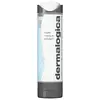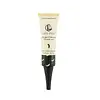What's inside
What's inside
 Key Ingredients
Key Ingredients

 Benefits
Benefits

 Concerns
Concerns

 Ingredients Side-by-side
Ingredients Side-by-side

Water
Skin ConditioningGlycerin
HumectantBehenyl Alcohol
EmollientSorbitol
HumectantCaprylic/Capric Triglyceride
MaskingHydroxyethyl Urea
HumectantPropanediol
SolventCetyl Ethylhexanoate
EmollientCetyl Alcohol
EmollientGlyceryl Stearate
EmollientCarthamus Tinctorius Oleosomes
EmollientHydrolyzed Jojoba Esters
Skin ConditioningBetaine
HumectantBambusa Arundinacea Stem Extract
Skin ConditioningMelia Azadirachta Leaf Extract
Skin ConditioningMelia Azadirachta Flower Extract
Skin ConditioningCorallina Officinalis Extract
Skin ConditioningCucumis Sativus Fruit Extract
EmollientCoccinia Indica Fruit Extract
Skin ConditioningAcacia Decurrens Extract
AstringentRicinus Communis Seed Oil
MaskingAloe Barbadensis Flower Extract
EmollientSolanum Melongena Fruit Extract
Skin ConditioningAverrhoa Carambola Fruit Extract
Skin ConditioningNephelium Lappaceum Branch/Fruit/Leaf Extract
Skin ConditioningSaccharomyces/Xylinum/Black Tea Ferment
Skin ConditioningSpirulina Maxima Extract
SmoothingTremella Fuciformis Extract
HumectantViola Odorata Leaf Extract
MaskingCurcuma Longa Root Extract
MaskingOcimum Basilicum Flower/Leaf Extract
TonicOcimum Sanctum Leaf Extract
Skin ConditioningBacillus Ferment
Skin ConditioningSodium Hyaluronate
HumectantTriethyl Citrate
MaskingPEG-75 Stearate
Pentylene Glycol
Skin ConditioningXanthan Gum
EmulsifyingPhytosteryl Oleate
Skin Conditioning1,2-Hexanediol
Skin ConditioningCeteth-20
CleansingSteareth-20
CleansingC12-13 Pareth-3
EmulsifyingCaprylyl Glycol
EmollientTitanium Dioxide
Cosmetic ColorantLactic Acid
BufferingButylene Glycol
HumectantPhenylpropanol
MaskingEthylhexylglycerin
Skin ConditioningCalcium Alginate
MaskingJojoba Esters
EmollientAminomethyl Propanol
BufferingPolyquaternium-10
Citric Acid
BufferingDipotassium Glycyrrhizate
HumectantGluconic Acid
Biosaccharide Gum-4
Skin ConditioningPhytosterols
Skin ConditioningSodium Benzoate
MaskingXylitol
Humectant3-Hexenol
MaskingSodium Acetate
BufferingSodium Chloride
MaskingIsopropyl Alcohol
SolventCaprylhydroxamic Acid
Water, Glycerin, Behenyl Alcohol, Sorbitol, Caprylic/Capric Triglyceride, Hydroxyethyl Urea, Propanediol, Cetyl Ethylhexanoate, Cetyl Alcohol, Glyceryl Stearate, Carthamus Tinctorius Oleosomes, Hydrolyzed Jojoba Esters, Betaine, Bambusa Arundinacea Stem Extract, Melia Azadirachta Leaf Extract, Melia Azadirachta Flower Extract, Corallina Officinalis Extract, Cucumis Sativus Fruit Extract, Coccinia Indica Fruit Extract, Acacia Decurrens Extract, Ricinus Communis Seed Oil, Aloe Barbadensis Flower Extract, Solanum Melongena Fruit Extract, Averrhoa Carambola Fruit Extract, Nephelium Lappaceum Branch/Fruit/Leaf Extract, Saccharomyces/Xylinum/Black Tea Ferment, Spirulina Maxima Extract, Tremella Fuciformis Extract, Viola Odorata Leaf Extract, Curcuma Longa Root Extract, Ocimum Basilicum Flower/Leaf Extract, Ocimum Sanctum Leaf Extract, Bacillus Ferment, Sodium Hyaluronate, Triethyl Citrate, PEG-75 Stearate, Pentylene Glycol, Xanthan Gum, Phytosteryl Oleate, 1,2-Hexanediol, Ceteth-20, Steareth-20, C12-13 Pareth-3, Caprylyl Glycol, Titanium Dioxide, Lactic Acid, Butylene Glycol, Phenylpropanol, Ethylhexylglycerin, Calcium Alginate, Jojoba Esters, Aminomethyl Propanol, Polyquaternium-10, Citric Acid, Dipotassium Glycyrrhizate, Gluconic Acid, Biosaccharide Gum-4, Phytosterols, Sodium Benzoate, Xylitol, 3-Hexenol, Sodium Acetate, Sodium Chloride, Isopropyl Alcohol, Caprylhydroxamic Acid
Ingredients Explained
These ingredients are found in both products.
Ingredients higher up in an ingredient list are typically present in a larger amount.
Glycerin is already naturally found in your skin. It helps moisturize and protect your skin.
A study from 2016 found glycerin to be more effective as a humectant than AHAs and hyaluronic acid.
As a humectant, it helps the skin stay hydrated by pulling moisture to your skin. The low molecular weight of glycerin allows it to pull moisture into the deeper layers of your skin.
Hydrated skin improves your skin barrier; Your skin barrier helps protect against irritants and bacteria.
Glycerin has also been found to have antimicrobial and antiviral properties. Due to these properties, glycerin is often used in wound and burn treatments.
In cosmetics, glycerin is usually derived from plants such as soybean or palm. However, it can also be sourced from animals, such as tallow or animal fat.
This ingredient is organic, colorless, odorless, and non-toxic.
Glycerin is the name for this ingredient in American English. British English uses Glycerol/Glycerine.
Learn more about GlycerinLactic Acid is another well-loved alpha hydroxy acid (AHA). It is gentler than glycolic acid but still highly effective.
Its main role is to exfoliate the surface of the skin by loosening the “glue” that holds dead skin cells together. Shedding those old cells leads to smoother, softer, and more even-toned skin.
Because lactic acid molecules are larger than glycolic acid, they don’t penetrate as deeply. This means they’re less likely to sting or irritate, making it a great choice for beginners or those with sensitive skin.
Like glycolic acid, it can:
Lactic acid also acts as a humectant (like hyaluronic acid). It can draw water into the skin to improve hydration and also plays a role in the skin's natural moisturizing factor (NMF) in the form of sodium lactate.
Studies show it can boost ceramide production to strengthen the skin barrier and even help balance the skin’s microbiome.
To get results, choose products with a pH between 3-4.
Lower strengths (5-12%) focus on surface exfoliation; higher strengths (12% and up) can reach deeper in the dermis (deeper, supportive layer) to improve skin texture and firmness over time.
Though it was originally derived from milk, most modern lactic acid used in skincare is vegan. It is made through non-dairy fermentation to create a bio-identical and stable form suitable for all formulations.
When lactic acid shows up near the end of an ingredient list, it usually means the brand added just a tiny amount to adjust the product’s pH.
Legend has it that Cleopatra used to bathe in sour milk to help reduce wrinkles.
Lactic acid is truly a gentle multitasker: it exfoliates, hydrates, strengthens, and brightens. It's a great ingredient for giving your skin a smooth, glowing, and healthy look without the harshness of stronger acids.
Read more about some other popular AHA's here:
Learn more about Lactic AcidPropanediol is an all-star ingredient. It softens, hydrates, and smooths the skin.
It’s often used to:
Propanediol is not likely to cause sensitivity and considered safe to use. It is derived from corn or petroleum with a clear color and no scent.
Learn more about PropanediolWater. It's the most common cosmetic ingredient of all. You'll usually see it at the top of ingredient lists, meaning that it makes up the largest part of the product.
So why is it so popular? Water most often acts as a solvent - this means that it helps dissolve other ingredients into the formulation.
You'll also recognize water as that liquid we all need to stay alive. If you see this, drink a glass of water. Stay hydrated!
Learn more about Water